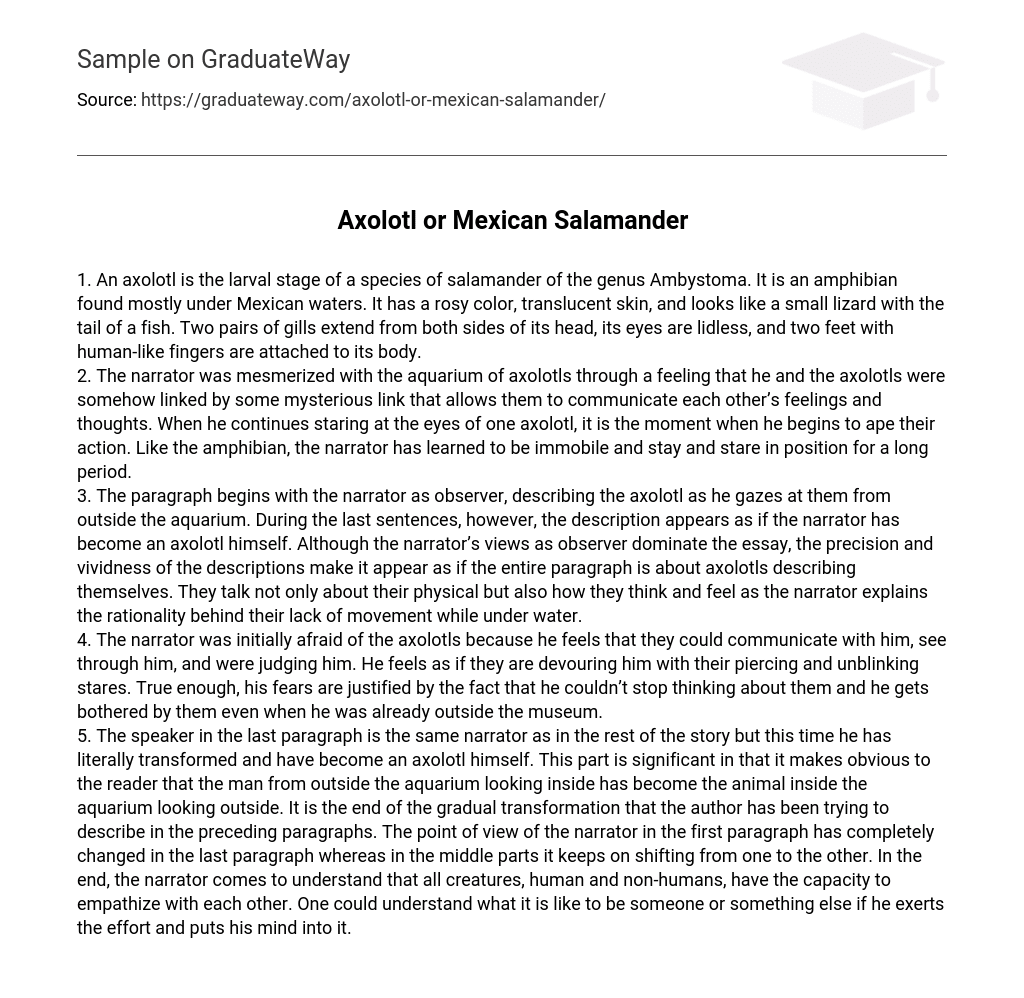1. An axolotl is the larval stage of a species of salamander of the genus Ambystoma. It is an amphibian found mostly under Mexican waters. It has a rosy color, translucent skin, and looks like a small lizard with the tail of a fish. Two pairs of gills extend from both sides of its head, its eyes are lidless, and two feet with human-like fingers are attached to its body.
2. The narrator was mesmerized with the aquarium of axolotls through a feeling that he and the axolotls were somehow linked by some mysterious link that allows them to communicate each other’s feelings and thoughts. When he continues staring at the eyes of one axolotl, it is the moment when he begins to ape their action. Like the amphibian, the narrator has learned to be immobile and stay and stare in position for a long period.
3. The paragraph begins with the narrator as observer, describing the axolotl as he gazes at them from outside the aquarium. During the last sentences, however, the description appears as if the narrator has become an axolotl himself. Although the narrator’s views as observer dominate the essay, the precision and vividness of the descriptions make it appear as if the entire paragraph is about axolotls describing themselves. They talk not only about their physical but also how they think and feel as the narrator explains the rationality behind their lack of movement while under water. 4.
The narrator was initially afraid of the axolotls because he feels that they could communicate with him, see through him, and were judging him. He feels as if they are devouring him with their piercing and unblinking stares. True enough, his fears are justified by the fact that he couldn’t stop thinking about them and he gets bothered by them even when he was already outside the museum. 5. The speaker in the last paragraph is the same narrator as in the rest of the story but this time he has literally transformed and have become an axolotl himself.
This part is significant in that it makes obvious to the reader that the man from outside the aquarium looking inside has become the animal inside the aquarium looking outside. It is the end of the gradual transformation that the author has been trying to describe in the preceding paragraphs. The point of view of the narrator in the first paragraph has completely changed in the last paragraph whereas in the middle parts it keeps on shifting from one to the other. In the end, the narrator comes to understand that all creatures, human and non-humans, have the capacity to empathize with each other. One could understand what it is like to be someone or something else if he exerts the effort and puts his mind into it.





